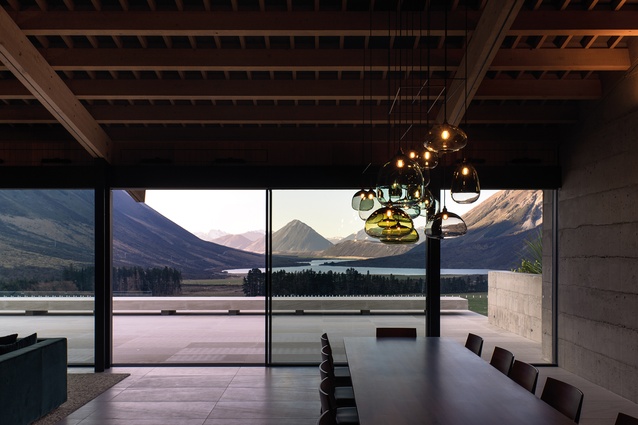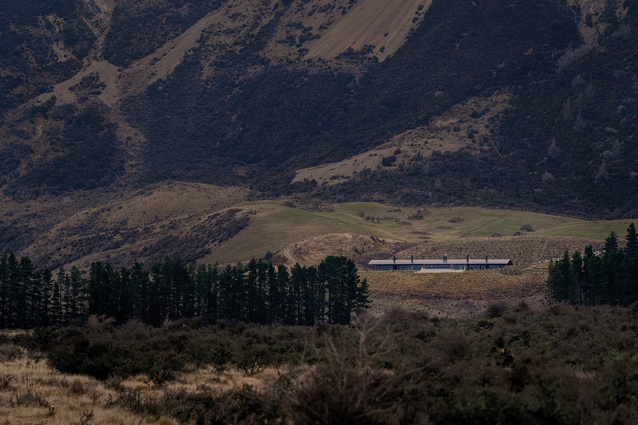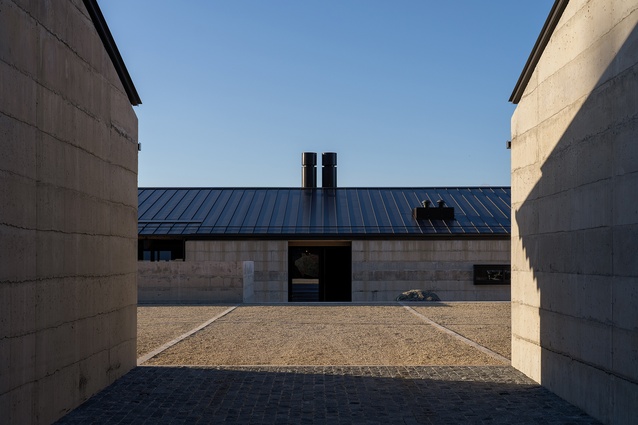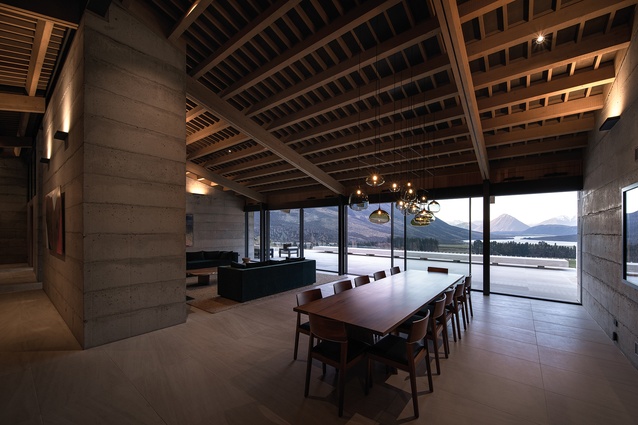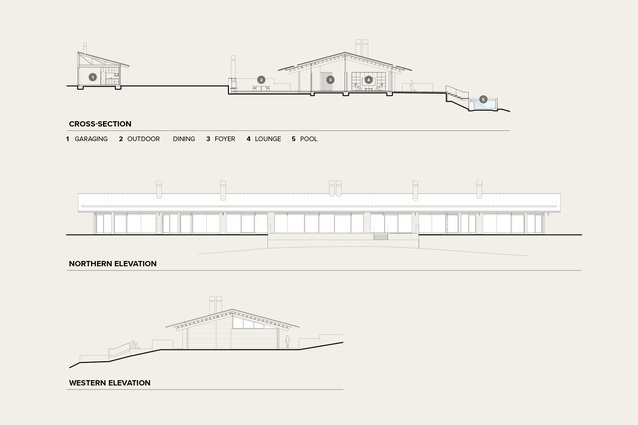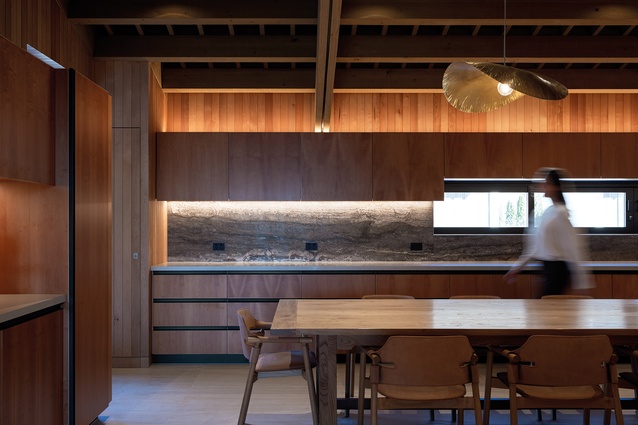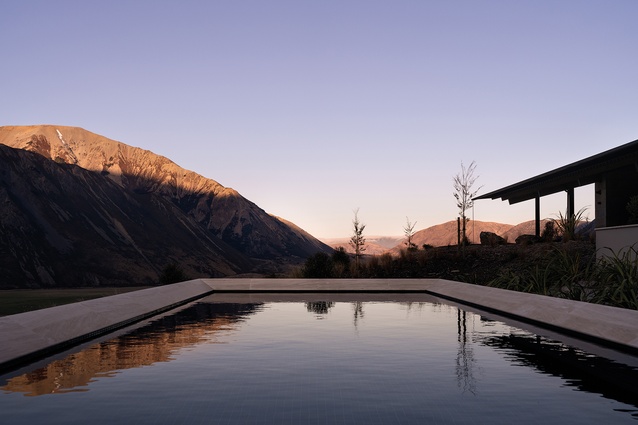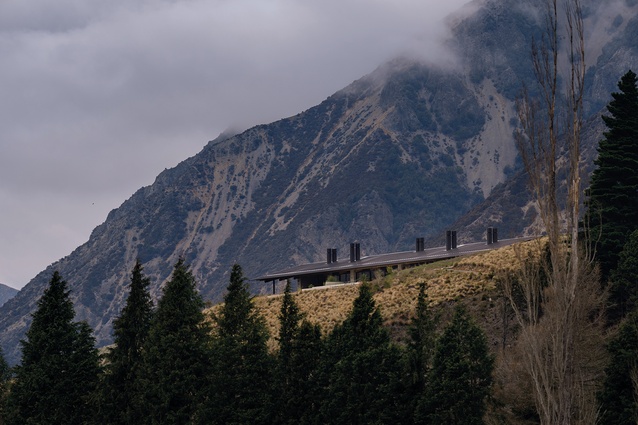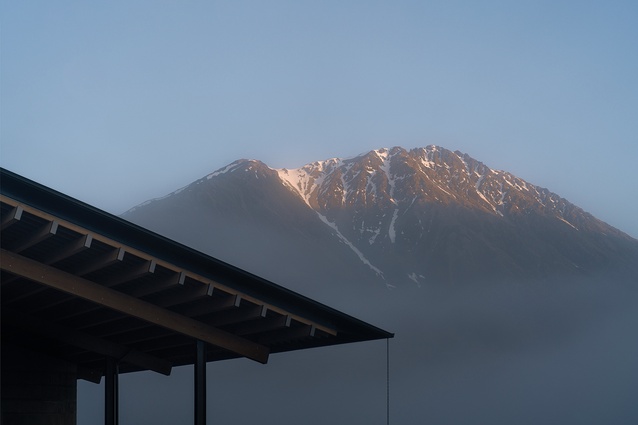Where mysteries live
Jasper van der Lingen is entranced by Warren and Mahoney's dream-like high-country Flock Hill Station Homestead in Canterbury — in a hauntingly beautiful rural setting of silent mountains, still lakes, framed skies and valleys.
There are places that seem dream-like, haunted by memories and fantastical stories: places with an atmosphere that comes from somewhere mysterious. For those of us brought up in Canterbury, this place is the high country, the mountains that loom distant on the horizon beyond the flat monotony of the plains. Up there is where mysteries live.

In the Craigieburn Range, on the way up to Arthur’s Pass, a moa was sighted in the bush in 1993; the claim was accompanied by the mandatory grainy photo, making nationwide news for weeks on end. Also, in the Craigieburn Range is the jumble of strange, sculptural limestone blocks scattered across the hills, Kura Tawhiti, Castle Hill. A 19th-century visitor, Reverend Charles Oakes, described them as “… like the buildings of a Cyclopean city”, and “… solitary masses like the gigantic monoliths of Stonehenge”.
A unique world, irresistible to film-makers, it has become the setting for films like The Chronicles of Narnia and The Lord of the Rings: a dreamscape of the imagination. Beyond the ranges, to the south, is where Samuel Butler set his 1872 novel Erewhon. Erewhon, an anagram of nowhere, was the story of a utopia, set in the Canterbury high country; an enigmatic place deep in the mountains, heralded by strange, gigantic statues of men, which howl in the wind.

You travel into these mountains on the fragile thread of State Highway 73 over Porters Pass and down into this other world. You continue past the Cyclopean city ruins, through the densely bush-clad saddles, with Erewhon over the ranges to the south, past Lake Pearson — a lonely hourglass lake surrounded by austere yellow-brown and grey mountains peering impassively down. Then you reach Cass, a railway settlement isolated and dominated by the land looming all around. There is the melancholy red Cass railway station made iconic by the 1936 Rita Angus painting, which was voted New Zealand’s greatest painting in 2006. This work has now become emblematic of the Canterbury high country.
Amidst this world of magic and imagination is the high-country station of Flock Hill, established in 1857. It’s a 14,000-hectare farm that stretches across mountain ranges, vast valleys and dark-green, bush-clad hillsides. Flock Hill was bought several years ago by a group of Americans who are slowly transforming it into a luxury destination for well-heeled visitors. They were undoubtedly attracted by this mesmerising landscape and the image of New Zealand as an untouched Eden: a natural world, clean and green with breathtaking scenery. It’s a place of peace and quiet, disconnected from the stresses of the contemporary world, and a place to slow down, and to feel embedded and part of a larger, mysterious and awe-inspiring world of silent mountains, still lakes, framed skies and valleys disappearing into the dreams of distance.

It is here that Warren and Mahoney has designed a lodge: a retreat from which to look out onto and in which to feel immersed within this sublime world. Safe, cocooned and hunkered down, it looks out at the sublimity beyond, like a figure in a Caspar David Friedrich painting.
The journey to the lodge is carefully orchestrated. You turn off State Highway 73 and, after passing over a bridge, you wind your way through a series of red farm buildings, unpretentious cousins of the Cass railway station, speaking amongst themselves of their past as utilitarian structures servicing this high-country run.
You leave them behind and ascend the slope, climbing to a plateau above. Around a bend, you see it, low and spreading, on the edge of the bank. You loop around and approach from the rear. The sequence is carefully considered, hiding then hinting at and teasing what is to come. You enter a forecourt between a pair of gatehouses, rumbling across cobbles and, then, the crunch of gravel. Sound, texture, visual anticipation and haptic sensation prepare you to enter the lodge itself. The main view is masked by the building and you are drawn to explore, entering through the symmetrically placed, solid timber door. You find yourself in a lowly lit entry hall and the teasing continues, with a concrete wall directly in front of you. Finally, as you move around this wall, the view is revealed, taking your breath away. The austere landscape stretches away below, past Lake Pearson to the conical Sugarloaf Peak beyond, framed on either side by mountain ranges, sentinels quiet and indifferent to the minor detritus of mankind below — the scratch of a road and a few scattered farm buildings lost in the vastness. The lodge takes full advantage of this sight, stretching all major rooms in a row along the ridge, sharing it equally together under a deceptively simple gabled form. You just want to relax, pour a whisky, sink into one of the couches, feel time slow and allow the rhythms of the natural world to take over.

Architecturally, the building is about its place and a desire to be part of this landscape, and a part of Aotearoa, its history and culture. It is as if the Kiwi farm structures, mountain huts and shearing sheds have been pulled apart, their essence analysed and reframed, and then reconstituted in a considered way. Their functional, vernacular, workaday character has been re-imagined. The linings have been removed and the ubiquitous Kiwi timber frame is exposed and expressed in the roof above.
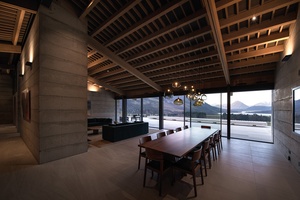
The solid walls dividing space are mostly masonry, beautifully conceived and constructed from separately poured layers of pigmented concrete, evoking the distinctive limestone structures of the area. The coverings that typically mask what is within are removed; there is no plasterboard anywhere and virtually no paint. It is what it is. Everything is oversized to give a generosity of scale. High ceilings and three-metre cantilevered eaves take the vernacular and scale it up, lifting it from its utilitarian origins to something special. Edges are thinned out, with a roof of dark-coloured standing-seam Colorsteel, utilising a double-gutter system to achieve a fine edge to the overhanging, low-pitched gable roof. Along with the sharp edges of the steel columns, this lightness contrasts with the weight of the massive concrete buttress walls anchoring the structure to the ground.
Many of the fixtures and furniture are Kiwi, with locally made beds, joinery and light fittings, and even the crockery was made specially for the lodge. It is a highly refined and luxurious version of Kiwiana: an elegant shed, a grand back-country hut. There’s a type of alchemy in its transformation of the utilitarian into luxury.
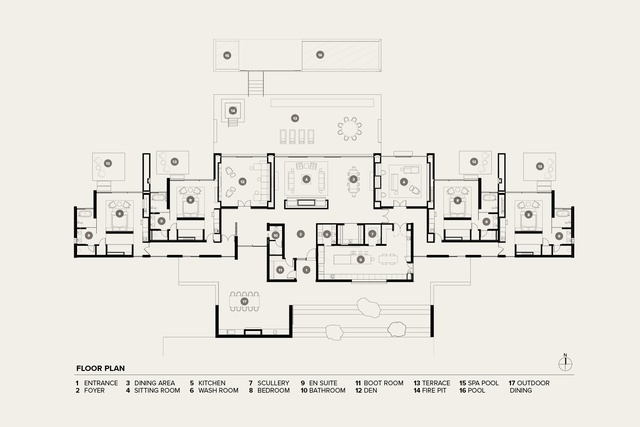
Yet, there are a few jarring notes. Small patches of manicured lawn and foreign deciduous trees speak of an imported vision of what a luxury resort should be. The building sits demurely, somewhat back from the edge of a precipice: not a choice of the architects who were after the drama of truly perching on the edge, overlooking this magical land below. But these are minor quibbles and, overall, the lodge is a beautifully conceived solution to the challenging issue of how to place a new structure within this mythical landscape. It does this by reflecting the qualities of the place in a sensitive way, without awkward intrusion. The low-slung, hunkered-down form stretches horizontally in long cantilevers, Frank Lloyd Wright-like. Made of natural materials whose colours and textures merge into the environment, it is a sympathetic addition to the landscape that enhances rather than detracts.
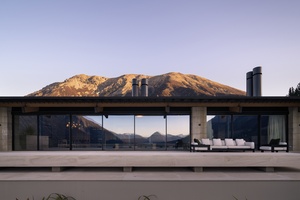
Surrounded by a beautifully crafted and constructed high-country hut, visitors feel immersed in a landscape of antipodean dreams and imagination. Not the nowhere place of Erewhon, this lodge is, instead, rooted to its place, this Aotearoa landscape haunted by myths and stories. It is a place of tranquillity, a place that allows well-off visitors the luxury to dream. The Castle Hill limestone monoliths, Kura Tawhiti, like mysterious, natural Rapa Nui moai, are the gatekeepers to this place, speaking of times past and imagined. If the wind is right, you might hear the lonely call of a distant train pulling into the Cass railway station way off down the valley. And, as the evening light dims and the quiet descends, you could almost imagine that moa do still exist in the dense, dark-green mountainsides of the Craigieburn Range close by.

